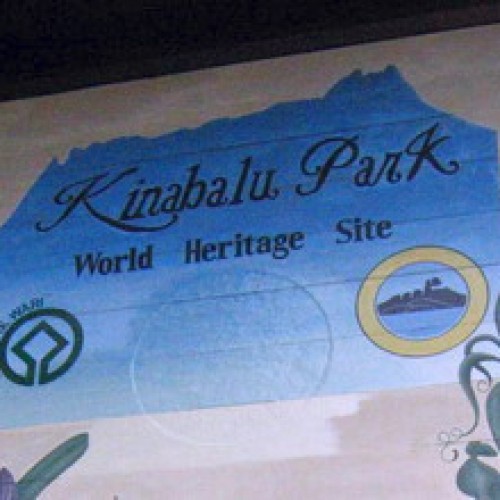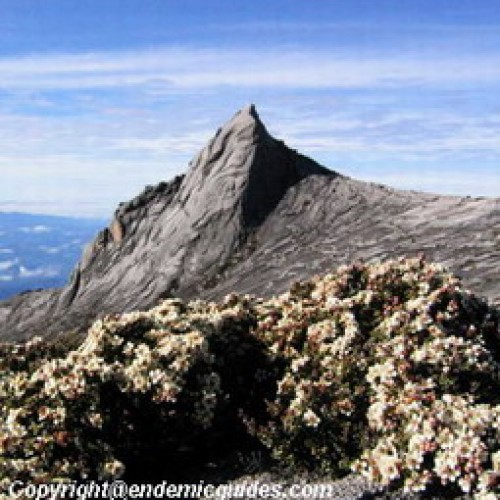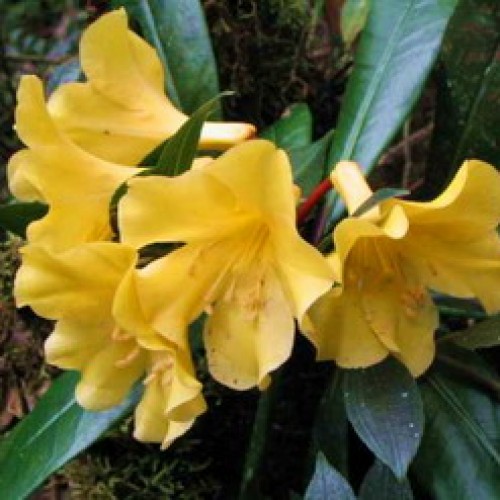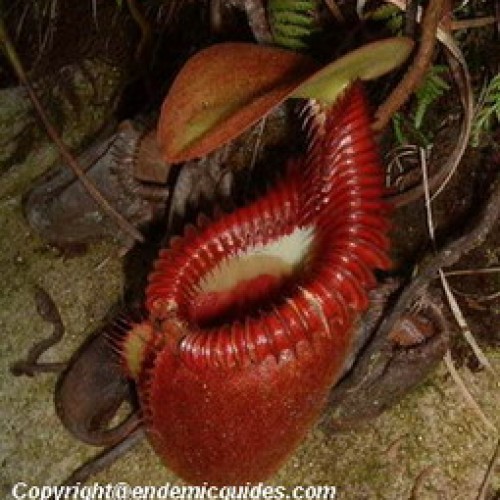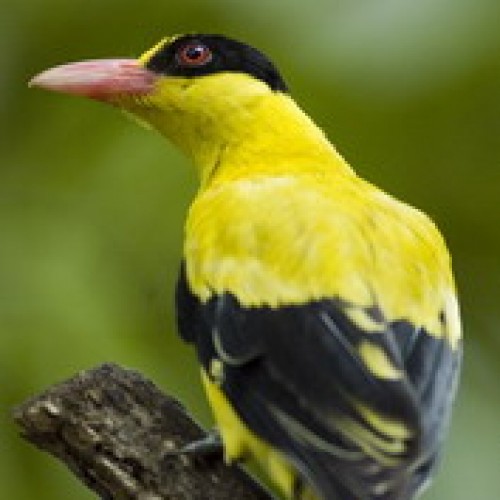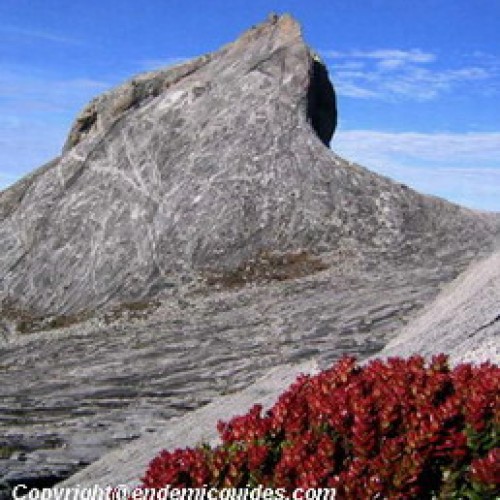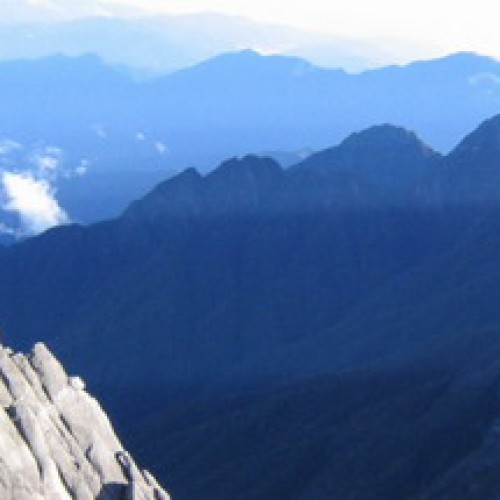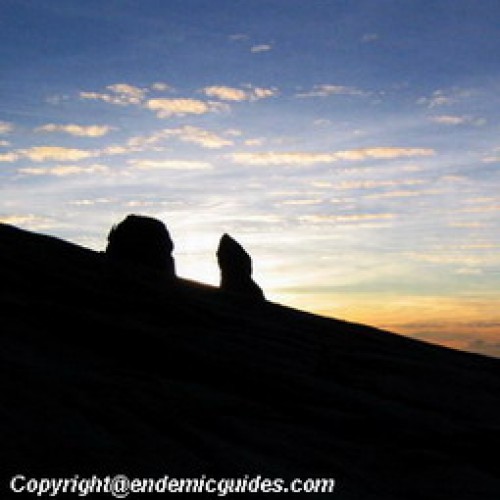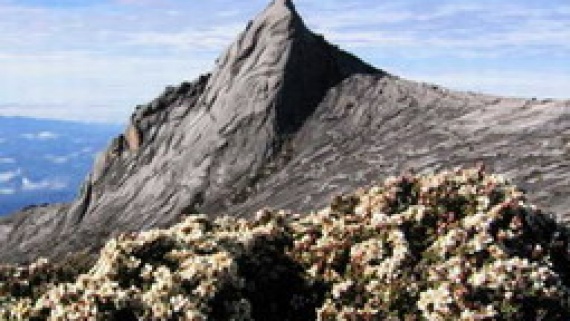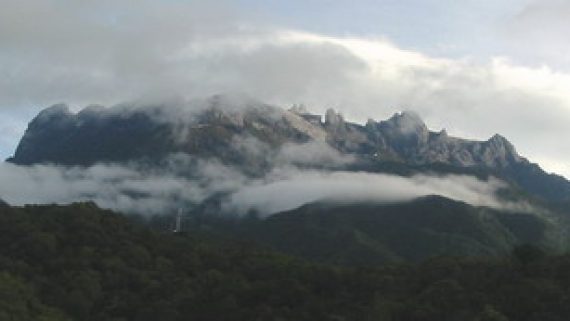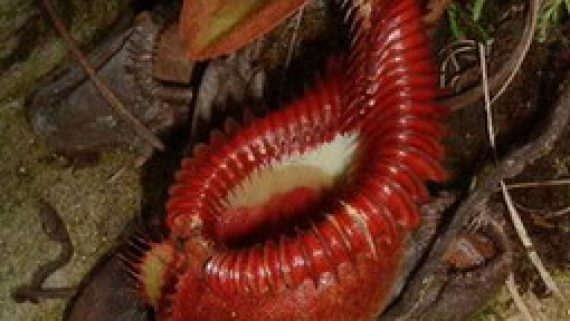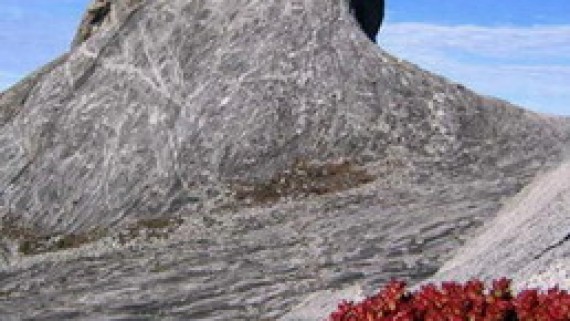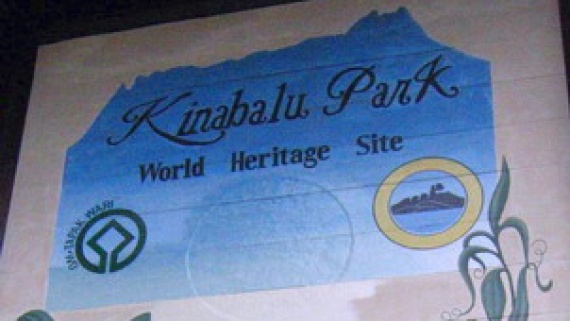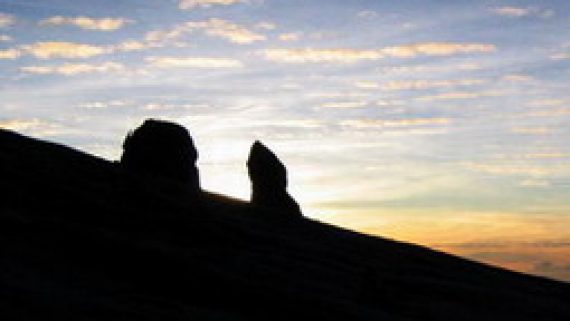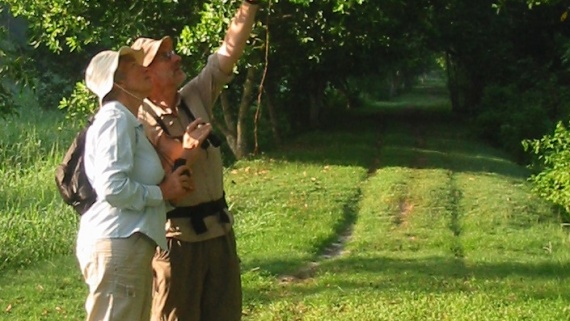Mount Kinabalu National Park, Sabah
Introduction and History
Kinabalu Park was established in 1964 and covers an area of 750 square kilometers (300 square miles). Two expeditions to explore the mountain and its flora in 1961 and 1964 were led by Professor John Corner, on behalf of the Royal Society of London, which led to the formation of Kinabalu Park.
The Park is situated in the East Malaysian state of Sabah (British North Borneo before 1963) and stretches through the entire west coast of Sabah. Its highest peak is Mount Kinabalu standing at 4101 meters (13,455 feet) visible from the South China Sea. Being the world’s youngest granite pluton, it continues to rise 5mm/year.
The lowest elevation in Kinabalu Park is at Poring Hot Springs (550 meters/1,805 feet), which lies near the Park’s southern boundary. Therefore temperatures decrease from 25° C hot and humid at Poring to a cool and crisp 4°C at Mount Kinabalu’s summit. The climatic changes provide a diverse range of habitats for thousands of plant species.
Due to the high altitude, clouds are trapped in many parts of the Park and heavy rainfall occurs for several months of the year from October to January while February to May are generally the driest months. A common climatic feature of the Park, are bright early mornings, followed by clouds mid-morning which obscure the mountains by mid-day.
Physical features
Mount Kinabalu is the tallest Malaysian mountain. The next two highest peaks being Mount Trus Madi (8,666 feet) and Mount Tambuyukon (8,462 feet) located 50 kilometers south and 20 kilometers north of Mt Kinabalu respectively. A total of six unique major topographical features occur with Kinabalu Park. These include peaks and plateaus, gullies, rivers, streams and waterfalls, hot springs, caves (Paka Caves and the tumbled bats cave at Poring) and granite slabs, a characteristic of the slopes of the summit.
Mount Kinabalu comprises an oval-shaped granite dome which resulted 1.5 million years ago by volcanic, tectonic and geological processes. Rapid uplift followed by glacial erosion during the Ice Age contributed to the smooth rock surface, which is well graded and paved at the summit. Low’s Gully is the most spectacular feature of the mountain spliting it into two peak forming the Western and Eastern Summit Plateau.
Flora and fauna
Kinabalu Park has essentially four main vegetation zones. However, these zones are localized variations depending on factors such as soil type, terrain, presence or absence of soils, proximity to streams and degree of exposure to sunlight. At altitudes above 1200 meters (4,000 feet) it is a place for plants of Himalayan and Chinese genera and for plants of Australian and New Zealand and even American affinity which consist of, among others, buttercups (of Australian affinity), the Rosaceous trees and shrubs and Violets (both of which are of Sino-Himalayan affinity) and they mingle with pitcher plants (Nepenthes) and bamboos of Bornean origins.
A recent study by Beaman & Beaman (1998) found that Kinabalu contains as many as 5,000 to 6,000 species, comprising of over 200 families. More than half (78 species) of the 135 species of Ficus can be found at the site making Mount Kinabalu one of the richest and most diverse assemblages of plants in the world.
There are believed to be 1,000 orchid species, including at least five species of slipper orchid, of the genus Papiopedillium, perhaps the most famous orchid species found on Kinabalu, but they are rarely seen due to intensive collecting for commercial use. Other magnificent orchids are mainly Eria, Bulbophyllum, Dendrobium, Liparis, Dendrochilum, Pholidota, and Coelogyne.
Over 600 fern species are found within the Park, comprising of tree ferns, shade ferns, thicket ferns, epiphytic ferns and tiny scrub ferns. Nest ferns (Asplenium nidus) are found on every walk at the Park.
One of the rarest plants in the world – the Rafflesia is only found in very few locations in Borneo. Named after Sir Stamford Raffles (who founded Singapore in 1819), it is the largest flower in the world. Two species, R. Keithii and R. Pricei have been found in the Park in the Poring Hot Springs area. In recent years, a third species, R. Tengku-Adlini was discovered.
Majority of Borneo’s mammals live in the lowlands but some can be found in the lower montane forests. Approximately 90 species of lowland mammals have been recorded, leaf monkey, red leaf monkey, orangutan, Borneo gibbon, linsang, and binturong. Among these categories are numerous bat species, slow loris, tarsier, grey binturong). Other larger mammals recorded include the bearded pigs, sun bears, sambar deer, barking deer and mouse deer. The smaller mammals seen include the tree shrews, squirrels (tree, ground and flying squirrels), pangolins, porcupines while those likely to be spotted at night are the palm civets, Malay weasels, rats and mice, flying foxes and the leopard cats.
Kinabalu is also the home of a few species of mammals classified as insectivores which feed only or predominantly on invertebrates. Sightings of Borneo’s largest insectivore the Moonrat has been recorded in the fringes of the Park while the Lesser Gymnure is confined to the areas of the Park above the lowland dipterocarp forests. The Black Shrew and the Kinabalu Shrew are found only on Mt. Kinabalu. The Ferret-badger is found at altitudes between 3600 feet and 13300 feet. It has close relatives in the mountain ranges of mainland Asia and Java. However in Borneo it is confined to Mt. Kinabalu and nearby mountains.
Kinabalu recorded more than 326 species of birds, categorized respectively into 4 groups; sub-alpine species, endemic montane species, non-endemic montane species and lowland species.
Some 22 species of montane birds which include the Red-breasted partridge, Crrimson-headed partridge, Everett’s thrush and Kinabalu serpent eagle. The lowland birds are normally found below 3,300 feet. In sub-alpine forests the little brown Sunda Bush-warbler and the Short-tailed Bush-warbler are often seen skulking about in the undergrowth above 6540 feet. The most common sub-alpine birds are the black and red Mountain Blackbird and the smaller dark olive-green Blackeye. Higher up above the tree line the Blue and White-browed Shortwing can often be sighted. If you are lucky enough, you might encounter the Kinabalu Friendly Warbler.
There are as many as 200 species of butterflies, mostly occuring below 6350ft in Kinabalu. About 112 small moth species have been identified, these can be found at above 6000ft and are mostly active at night.
There are lots of amphibian and approximately 61 frog and toad species have been recorded in Kinabalu and many species of fresh water fishes, beetles, snakes and terrestrial mollusks.
Types and severity threats in Kinabalu Park
The unique flora found on the slopes of Mt. Kinabalu is protected to some extent by the steepness of the terrain and poor soil conditions, which discourage logging and farming.
Nevertheless, some of the surrounding slopes outside the park boundary are being cleared for farming. Road construction has enhanced tourist access to Kinabalu Park, which has led to the construction of more facilities. Some of these developments have been poorly planned and even detrimental, such as government development projects such as a golf course and the 1984 redesignation of Trus Madi from a watershed protection forest to that of a commercial forest reserve allowing logging to take place.
Commercial logging may have encroached into the park, and a section of the park was excised in 1974 for the development of a copper mine. A number of species, especially the rare and endemic species in the eco-region, are being over collected for the commercial wildlife and plant trade. These problems are exacerbated by the absence of buffer zones around the park and insufficient staff to enforce regulations.
Places of interest and activities
Mount Kinabalu offers a range of opportunities for hikers, scramblers and rock climbers.
The greatest obstacles are the altitude and distance. There are two tourist trails that are used to get to the summit. If you are planning an easier and shorter climb, most visitors like to hike to the summit over two days using Timpohan Gate. This trail will usually take you about 4-6 hours to reach Laban Rata rest house 10,850 ft. You can watch the sunrise on the second day and trek up to the summit and descend on the same day.
The other trail is the Mesilau trail, which takes slightly longer but is more scenic compared to Timpohan trail. This trail will usually take you about 6-9 hours to reach Laban Rata rest house.
For those who love rock climbing, the Western Plateau boasts the largest number of peaks and rock climbing opportunities with several approach options.
Getting there
When to go
Any time of year but it is best to avoid the rainy periods (November to February).
Access
Overland to Kota Kinabalu from Sandakan or Tawau. The main park entrance lies just off the main Kota Kinabalu-Sandakan highway. The largest towns nearby are Kundasang or Ranau. From Kundasang, it is possible to access the recently opened Mesilau Visitors Center. South of Ranau is Poring Hot Springs.
Permits
A nominal entrance fee is charged at the park entrance (at Park HQ, Mesilau or Poring), but, a permit and guide fees are compulsory for those wishing to climb Mt. Kinabalu.
Facilities
A variety of overnight accommodation is available here. Simple chalets and dorms are available at the Park HQ, Mesilau and Poring. However, it is advisable to book the accommodation in advance at Kota Kinabalu. Other facilities include an information center, gift shop and restaurant at Panar Laban Lata at 10,850 ft. At Poring, you can also find accommodation, a restaurant, hot spring bathing tubs, canopy walkway, butterfly enclosure, an orchid garden and marked forested trails.
How to get there
Express and minibuses are available between Kota Kinabalu and Ranau or Sandakan to the park turn-off, where it is 100m to the park. Air-con express buses leave the long-distance bus station in Kota kinabalu at 7.50am every day and take about 3 hours. There are also several minibuses daily from KK to Ranau. Four-wheel drive vehicles, coaches, aircraft and helicopters can also be chartered.
You can contact Sabah Parks at:
Sabah Parks
P.O. Box 10626,
88806 Kota Kinabalu
Tel: 088-211585/211652/211881
Reference: http://whc.unesco.org

